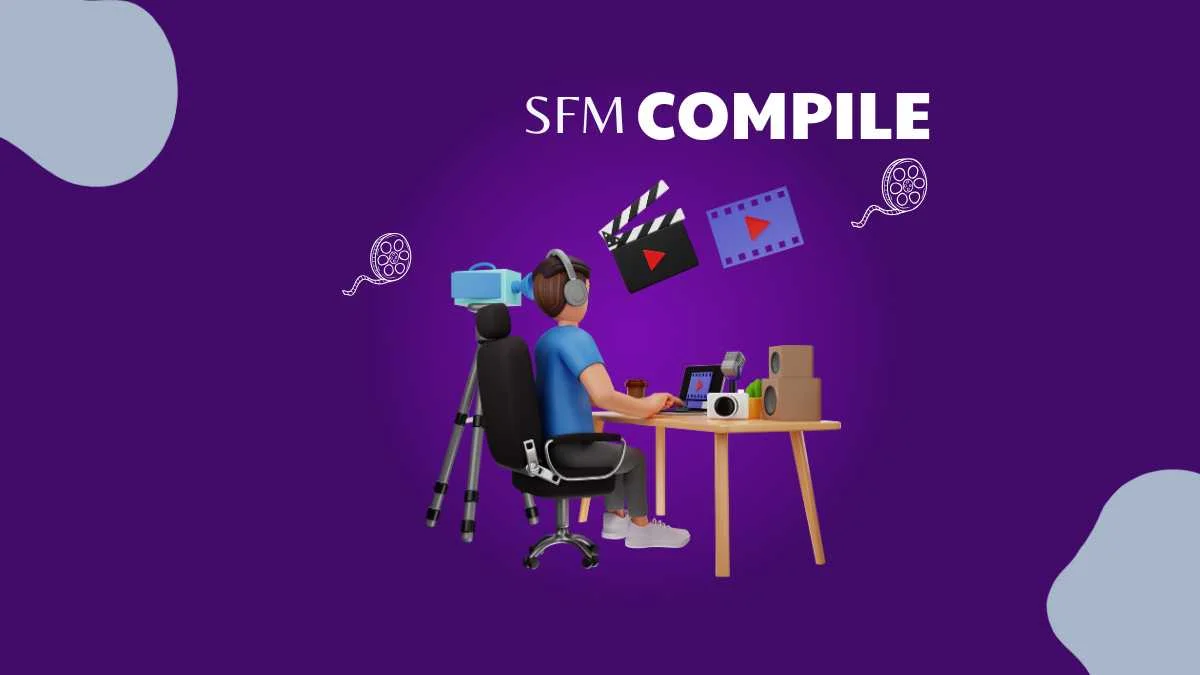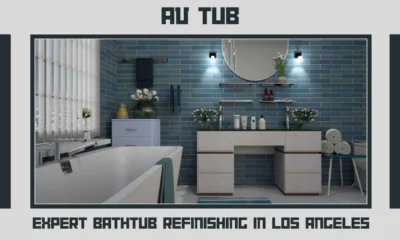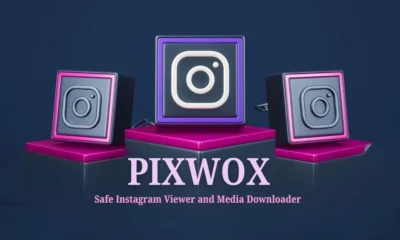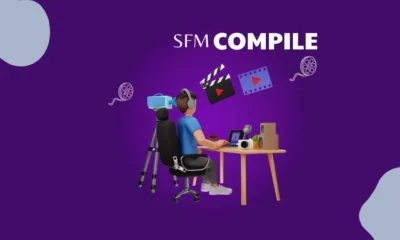TECHNOLOGY
What Is SFM Compile? Optimize Your SFM Animations Like a Pro

Among digital animations and cinematic narration, Source Filmmaker (SFM) is a content creation tool that has distinguished itself as a highly effective creation tool. Designed by Valve Corporation, SFM enables its users to craft feature-quality animation videos employing the content and surroundings of games played with the help of the Source engine, including Team Fortress 2, Half-Life 2, and Portal games. SFM Compile, also known as the compile process, is one of the key elements for creating a final video in SFM.
What Is SFM Compile?
SFM Compile refers to the process of converting an SFM project—comprised of various assets, camera angles, lighting, audio tracks, and animation sequences—into a finalized video file. It is the final step in the SFM pipeline that transforms a working timeline or session into a distributable, playable media format, typically .mp4 or .avi. This step is critical because it not only translates your creative vision into a consumable product but also ensures synchronization, rendering quality, and performance efficiency.
The Purpose of Compilation in SFM
At its core, compiling in SFM serves to:
- Convert the whole elements of the scene (models, particles and lighting, and camera angles) into a linear form.
- Make voiceovers, background music, and sound effects synchronized.
- Add ultimate lighting, motion blur, and anti-aliasing effects to finish off with a smooth appearance.
- Export the video in a format that works on a site such as YouTube, Vimeo, or game modding sites.
The Components of SFM Compilation
To understand SFM Compile thoroughly, it’s important to break down its key components:
1. Timeline and Session
An SFM project consists of sessions that are edited in a timeline, with various tracks representing animation data, sound, effects, and camera movements. When compiling, SFM reads the data from the timeline and processes it into frames.
2. Render Settings
The render options selected by the user include resolution (ex, 1080p, 4K), frame rate (e.g., 24 or 30 FPS), and quality (AA, depth of field, ambient occlusion). The latter has a direct effect on the quality of the video produced, i.e., how much detailing and smoothing it will contain.
3. Image Sequence vs. Movie Format
SFM extends the controller to two variants of compilation:
- Image Sequence: Creates one image per frame (PNG, TGA, etc.), which can be later pasted together with outside software to create a video. Chosen when a lot of quality is required by the rendering.
- Movie Format: It is directly compiled into an AVI file with codecs such as H.264. Less customizable but easier to decode with a higher chance of having compression artifacts.
4. Audio Rendering
Audio in SFM is synchronized with visual data during compilation. You can either render the audio as part of the video file or export it separately and mix it later using software like Adobe Premiere or Audacity.
The SFM Compile Process: Step-by-Step
Here’s a detailed look at the standard compile workflow in Source Filmmaker:
Step 1: Finalize the Scene
Before compiling, animators must finalize their shots, lighting, audio cues, and effects. This includes:
- Locking cameras
- Smoothing animations
- Applying final lighting passes
- Baking particles and physics
Step 2: Set Up Render Settings
Navigate to File > Export > Movie…. A dialogue box opens where users configure:
- File output path and name
- Render resolution
- Frame rate
- Render type (movie file or image sequence)
- Codec (if rendering directly to video)
- Bitrate and compression quality
Step 3: Choose a Range
Users can choose to render:
- The entire timeline
- Specific shots or time segments
- Preview range (useful for test renders)
Step 4: Render
Clicking the “Export Movie” or “Export Image Sequence” button initiates the compile. The rendering process may take anywhere from a few minutes to several hours, depending on scene complexity and system performance.
Common Compilation Issues and Fixes
| Issue | Solution |
| Crashing during render | Lower resolution or render in image sequence |
| Audio out of sync | Check sound placement on timeline or export audio separately |
| Poor lighting/render quality | Increase lighting samples, enable ambient occlusion |
| Codec errors | Use image sequences and compile via external software like FFMPEG |
Optimization Tips for Efficient SFM Compile
To speed up the compile process and minimize issues, follow these optimization practices:
- Pre-render complex shots to separate image sequences.
- Reduce model complexity by using LOD (Level of Detail) versions when possible.
- Limit particle and physics simulations to only what’s visible on-screen.
- Test small segments before rendering the full scene to check for bugs or sync issues.
Integration with External Tools
Although SFM is self-sufficient for basic compilation, professional workflows benefit from integrating tools like:
- Adobe Premiere Pro: For video editing, transitions, and credits.
- Audacity: For audio cleanup and voiceover edits.
- Blender: To create custom models or scenes that can be imported into SFM.
- FFMPEG: For advanced encoding and format conversion of image sequences.
Use Cases of SFM Compile in Creative Projects
- Fan Films and Machinima: Storytellers are using SFM to create their own stories set in games.
- Game Trailers and Promos: Designers and enthusiasts shoot dramatic trailer videos of gameplay or mods.
- YouTube Usage: Comedy skits, parody videos, and lore videos feature heavy use of SFM.
- Educational Animations: Tutorials, explainer videos, and demonstrations frequently employ SFM to create a sequence animation.
Future Trends and Developments
As the Source 2 engine gains traction and Valve updates its ecosystem, the future of SFM may include:
- Faster compilation engines
- Native support for 4K and VR content
- Real-time ray tracing
- Integration with cloud rendering services
- Plugin support for external editing software
Such advancements would further streamline the compilation process and enhance the visual fidelity of user-generated content.
Conclusion
SFM Compile is not simply an export button, but it is the pathway between visual storytelling and imagination. Proficiency in the process enables the creators with the power to provide cinematic-quality animations capable of engaging viewers on platforms. Be it a basic meme clip or a complex story mode machinima, learning to work with SFM Compile will open the possibilities of Source Filmmaker to its limit. Given constant practice, optimization, and the use of the right tools, animators can transform virtual assets into memorable stories, leaving long-lasting impressions.
-

 BIOGRAPHY7 months ago
BIOGRAPHY7 months agoBehind the Scenes with Sandra Orlow: An Exclusive Interview
-

 HOME1 year ago
HOME1 year agoDiscovering Insights: A Deep Dive into the //vital-mag.net blog
-

 HOME1 year ago
HOME1 year agoSifangds in Action: Real-Life Applications and Success Stories
-

 BIOGRAPHY1 year ago
BIOGRAPHY1 year agoThe Woman Behind the Comedian: Meet Andrew Santino Wife




























